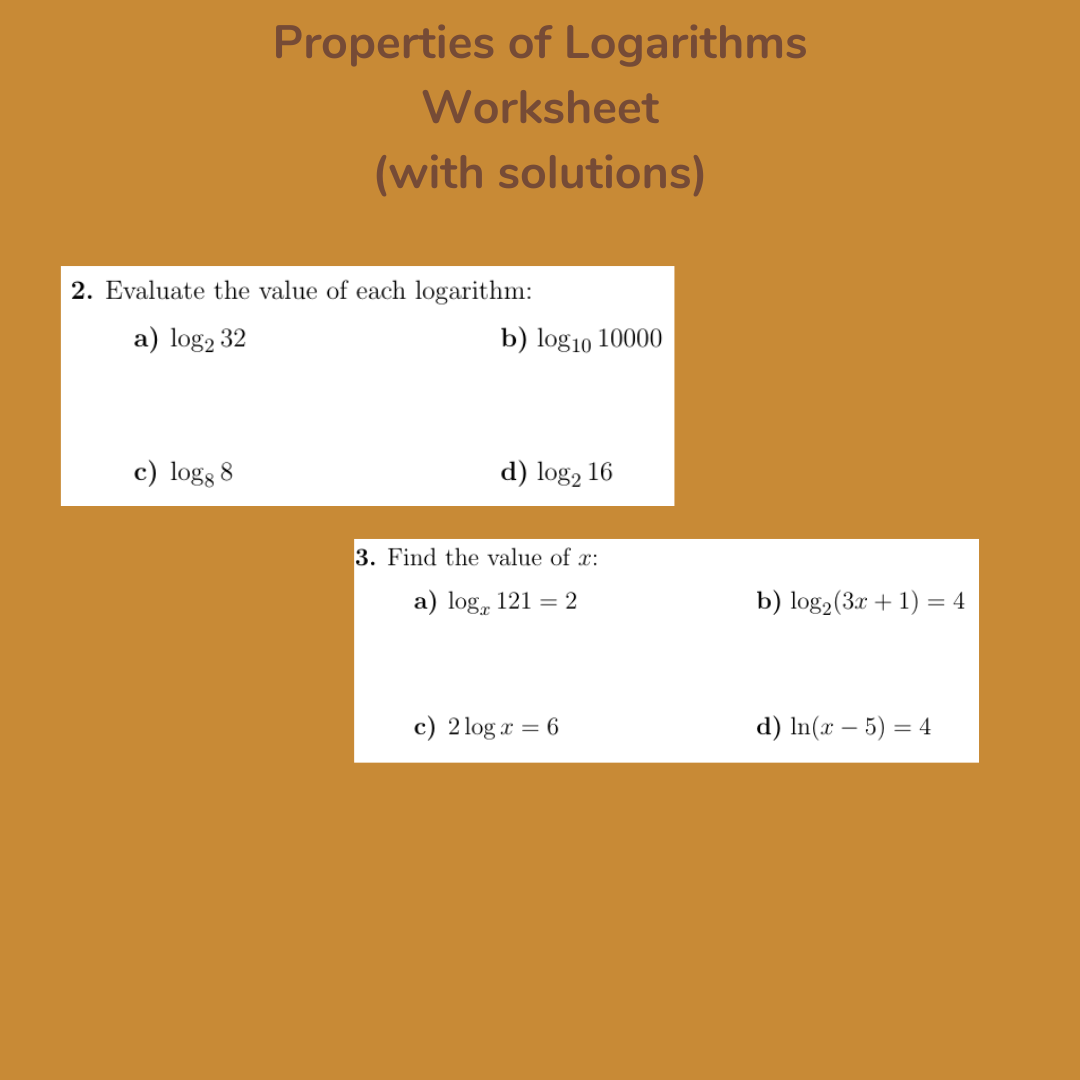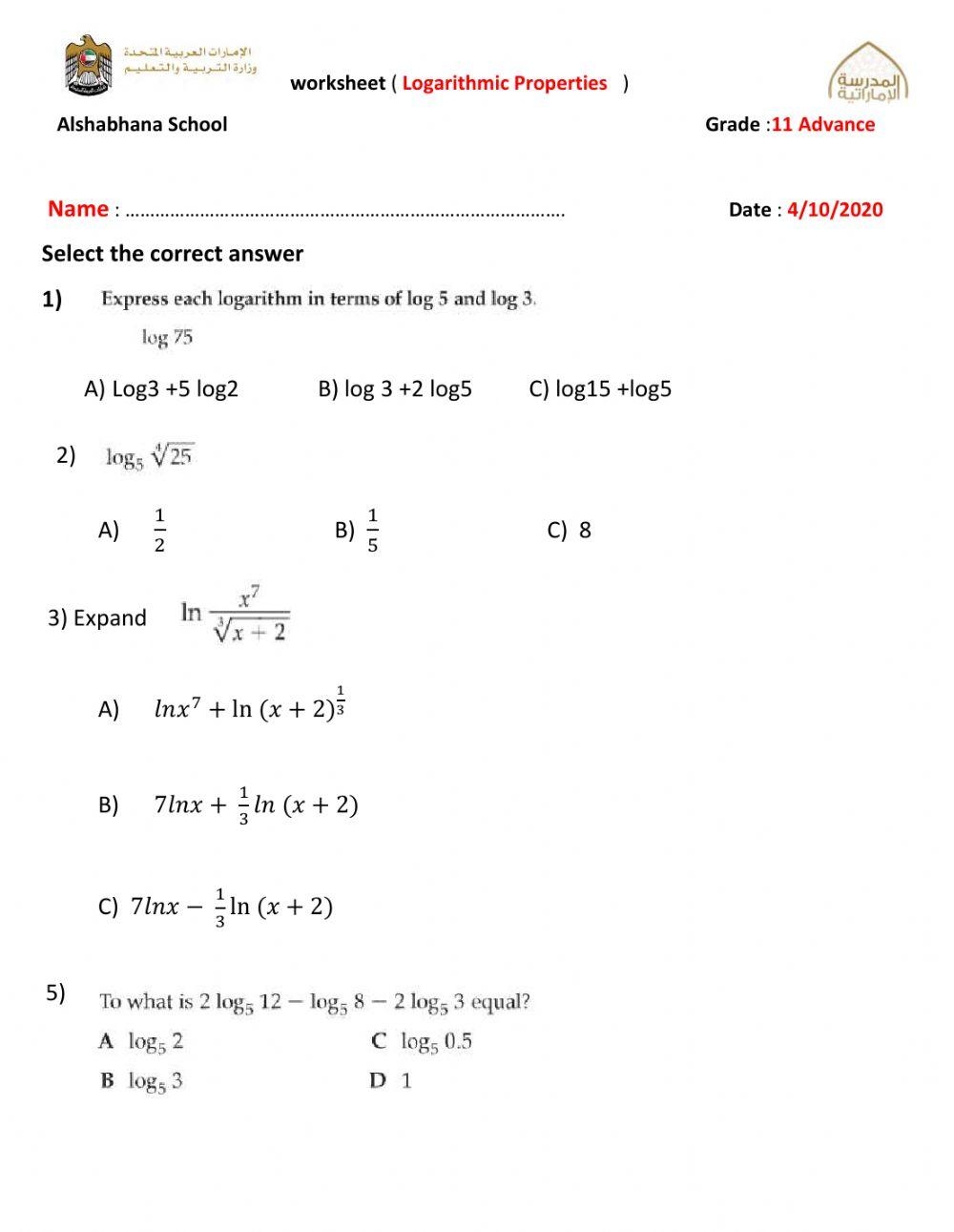Worksheet Properties of Logarithms
Logarithms are mathematical functions that represent the inverse operation of exponentiation. They are commonly used in various fields such as mathematics, engineering, and science. Understanding the properties of logarithms is crucial for solving complex equations and simplifying calculations.
In this article, we will explore the properties of logarithms that are commonly used in worksheets. By mastering these properties, you will be able to manipulate logarithmic expressions with ease and accuracy.
Worksheet Properties of Logarithms
One of the fundamental properties of logarithms is the product rule, which states that the log of a product is equal to the sum of the logs of the individual factors. Mathematically, this property can be represented as logb(xy) = logb(x) + logb(y).
Another important property is the quotient rule, which states that the log of a quotient is equal to the difference of the logs of the numerator and denominator. In equation form, this property can be written as logb(x/y) = logb(x) – logb(y).
The power rule is also a key property of logarithms, which states that the log of a number raised to a power is equal to the product of the power and the log of the number. This property can be expressed as logb(xn) = n * logb(x).
Additionally, logarithms have the property of change of base, which allows you to convert logarithms from one base to another. The formula for changing the base of a logarithm is logb(x) = loga(x) / loga(b), where a and b are the new and old bases, respectively.
By mastering these properties of logarithms, you will be able to simplify complex expressions, solve equations efficiently, and tackle challenging problems in various fields of study. Practice using these properties in worksheets to enhance your skills and deepen your understanding of logarithms.



